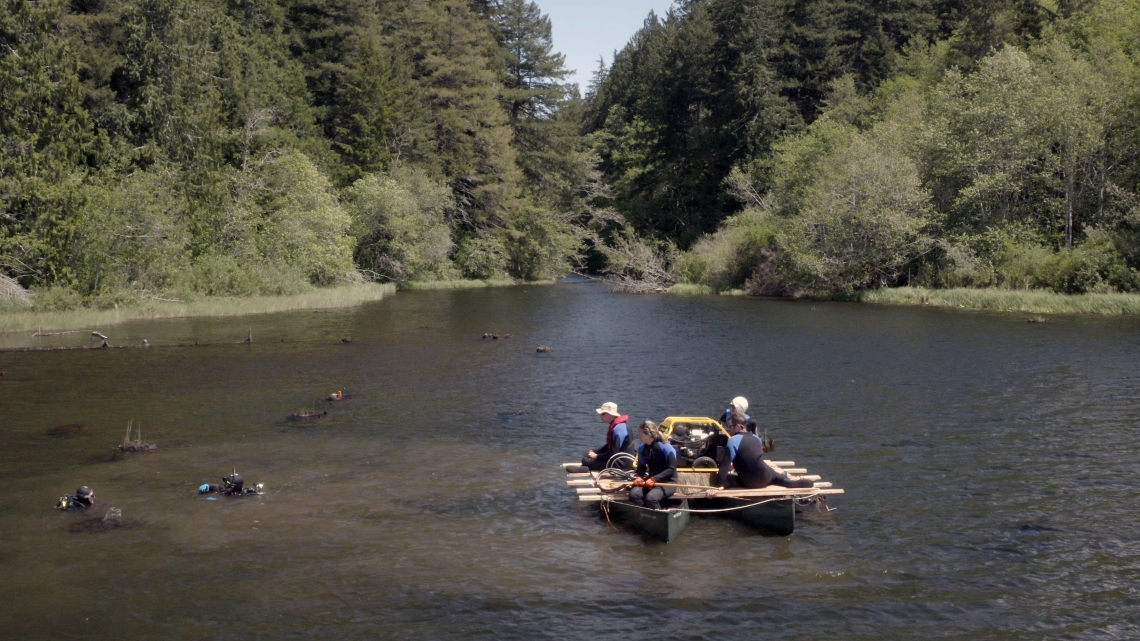Underwater chainsaws and tree rings helped researchers pinpoint when two large earthquakes struck the Pacific Northwest more than 1,000 years ago.

And, according to the research team from the University of Arizona, those shallow-fault earthquakes could hit the Seattle area again.
The team’s results were published on Wednesday. It’s estimated the twin earthquakes erupted together with an estimated magnitude of 7.8, akin to the two quakes in Turkey and Syria in February that killed thousands.
“Shallow faults typically result in more violent and focused shaking than earthquakes generated from other geological configurations,” said the University of Arizona.

The university said while earthquakes are not new to the Pacific Northwest, the study identified that shallow-fault quakes are linked to each other in some way, either by connections underground or by one fault transferring stress to the other.
The university’s study required dive teams using underwater chainsaws to cut rings from trees at the bottom of Lakes Washington and Sammamish.
The two earthquakes occurred either in late 923 or 924 A.D.
“Regional hazard models, used to develop engineering design and policies, don’t currently reflect this possibility, but should,” said author Bryan Black, an associate professor of dendrochronology at the university.
Since the 1960s, scientists have been uncovering shallow faults in the area. In fact, the Cascadia subduction zone has several faults – including the Seattle Fault, the Saddle Mountain Fault, the Tacoma Fault and the Olympia Fault.
“These are four shallow faults that had shown evidence of having ruptured roughly 1,000 years ago in a cluster of earthquakes called the millennial cluster,” Black said.

He continued, saying for example, “A 25-foot cliff was thrust into the air from west Seattle out to Puget Sound. It also triggered a local tsunami and landslides that stripped mountainsides of whole forests and discarded them into nearby Lakes Washington and Sammamish.”
Prior to making those dives, though, Black admitted they didn’t know when the two earthquakes erupted. They could have been minutes apart or centuries apart.
To give them an idea, the team turned to studying tree rings. In all, six sites were studied.
In 2021, Black ventured into Seattle’s nearby mountains to help harvest drowned stumps when the Saddle Mountain Fault impounded a stream that flooded a forest.
To harvest tree rings from the drowned stumps, the team strapped two canoes together and placed a large piece of plywood atop them to create a makeshift barge, which would hold a generator to power underwater chainsaws.
“With these in hand, divers leaped into the water to cut samples of trees killed when the lake formed from the millennial cluster,” said the university.

“Black and his team also had sections sourced from nearby trees killed around the same time during a rock avalanche that impounded a stream that flooded a nearby streambed.”
The team also acquired sections from trees collected more than 30 years ago that had drowned in landslides into Lake Washington and Lake Sammamish during a large earthquake on the Seattle Fault.
In comparing the growth patterns, Black found that the trees died in the same year across both the Saddle Mountain and Seattle faults.
“He also saw that the trees died during their dormant season, which narrows the time of death – and the earthquake by extension – to the late fall through early spring,” said the university.
The year was pegged at either late 923 or early 924.

“Our team was also lucky that there was a massive solar storm between the years 774 and 775, which caused a sudden global spike in radiocarbon,” said associate professor of dendrochronology and co-author Charlotte Pearson.
“We measured radiocarbon in the rings of earthquake-killed trees to show that this spike occurred right where we thought it should.”
The university said this confirmed their earthquake date.
“Combined, the evidence showed us that these trees from across the region died together, and this was in fact a linked event,” Black said. “We’ve taken uncertainties around these two faults that used to span decades or centuries and narrowed it down to within one season.”
He added, “demonstrating that these faults can rupture synchronously or in very rapid succession has really changed what we understand about the hazard in the region.”





Comments